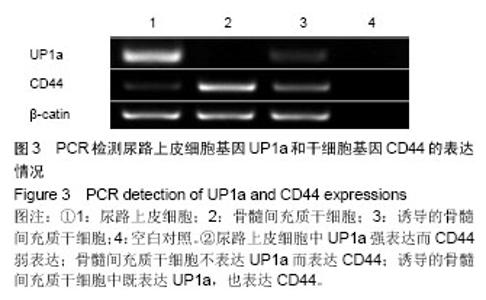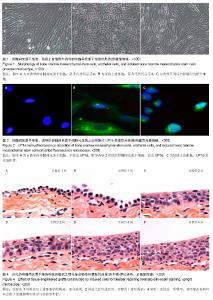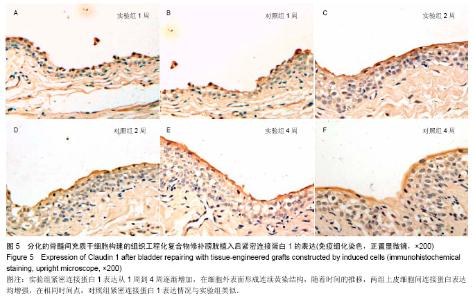| [1] Harrington DA, Sharma AK, Erickson BA, et al. Bladder tissue engineering through nanotechnology. World J Urol. 2008; 26(4):315-322.
[2] Chun YW, Lim H, Webster TJ, et al. Nanostructured bladder tissue replacements. Wiley Interdiscip Rev Nanomed Nanobiotechnol. 2010. in press.
[3] 吴志强,林春瑞,尹建福,等.改良低压回肠代膀胱术的疗效评价[J].现代泌尿外科杂志,2007(6):363-365.
[4] 徐鸿毅,邱学德,石永福,等.原位肠代膀胱术远期疗效评价(附266例报告)[J].中华泌尿外科杂志,2005(8):551-554.
[5] 张勇,陈忠.膀胱尿路上皮血-尿屏障的结构及功能[J].临床泌尿外科杂志,2011(8):637-640.
[6] Zhang Y, Atala A. Urothelial cell culture: stratified urothelial sheet and three-dimensional growth of urothelial structure. Methods Mol Biol. 2013;945:383-399.
[7] Tian H, Bharadwaj S, Liu Y, et al. Differentiation of human bone marrow mesenchymal stem cells into bladder cells: potential for urological tissue engineering. Tissue Eng Part A. 2010;16(5):1769-1779.
[8] Anumanthan G, Makari JH, Honea L, et al. Directed differentiation of bone marrow derived mesenchymal stem cells into bladder urothelium. J Urol. 2008;180(4 Suppl): 1778-1783.
[9] Ning J, Li C, Li H, et al. Bone marrow mesenchymal stem cells differentiate into urothelial cells and the implications for reconstructing urinary bladder mucosa. Cytotechnology. 2011;63(5):531-539.
[10] 李鸿宾,徐月敏.干细胞在组织工程技术修复重建下尿路疾病中的应用[J].中国组织工程研究与临床康复,2009,13(24):4734- 4737.
[11] 刘庆阳,史毅,王惠东,等.兔骨髓间充质干细胞的分离、培养与鉴定[J].组织工程与重建外科,2008,4(2):69-72.
[12] 廖文彪,宋超,杨嗣星.组织工程复合物进行兔尿流改道[J].中国组织工程研究,2013,17(2): 196-200.
[13] Liao W, Yang S, Song C, et al. Tissue-engineered tubular graft for urinary diversion after radical cystectomy in rabbits. J Surg Res. 2013;182(2):185-191.
[14] 李欣慧,廖文彪,李永伟,等.骨髓间充质干细胞与膀胱脱细胞基质的生物相容性[J].中国组织工程研究,2012,16(51):9567-9573.
[15] 胡卫列.间质性膀胱炎研究的新进展[J].国外医学:泌尿系统分册, 2002,22(3):156-181.
[16] Ingersoll MA, Albert ML. From infection to immunotherapy: host immune responses to bacteria at the bladder mucosa. Mucosal Immunol. 2013;6(6):1041-1053.
[17] Kloskowski T, Uzarska M, Gurtowska N, et al. How to isolate urothelial cells? Comparison of four different methods and literature review. Hum Cell. 2014;27(2):85-93
[18] Zhu W, Chen K, Lu W, et al. In vitro study of nano-HA/PLLA composite scaffold for rabbit BMSC differentiation under TGF-β1 induction. In Vitro Cell Dev Biol Anim. 2014; 50(3): 214-220.
[19] 刘杰.膀胱脱细胞基质负载兔脂肪间充质干细胞构建组织工程膀胱的实验研究[D].广州:中山大学,2010.
[20] Tian H, Bharadwaj S, Liu Y, et al. Myogenic differentiation of human bone marrow mesenchymal stem cells on a 3D nano fibrous scaffold for bladder tissue engineering. Biomaterials. 2010;31(5):870-877. |





